Science snippets
Three short and easy-to-digest snippets of science this week. After last weeks’ overly-long DIY extravaganza I thought I’d try and be a little more succinct this time.
The following triptych is based on three separate papers, two published in the last month or two and one from last year. Individually these incremental advances in our understanding probably do not justify a post of their own.
The first paper, on sodium butyrate, was included here following a question I was asked during an evening talk to a beekeeping association last week. I don’t think I answered the question particularly well, so thought I’d elaborate here for clarity. The science is cool, but the paper is rather odd.
The other two papers are on a related topic, the bacteria in the gut of bees. The first of these came out last week and had a very catchy title. Reading that paper resulted in my burrowing back a year or two into the literature. While doing this I found a related paper that has got me thinking again about feeding winter bees honey, syrup or fondant.
Sodium butyrate reverses DWV-induced memory loss
All honey bees, perhaps with the exception of those in Australia {{1}}, are infected with deformed wing virus (DWV). Historical studies that report 30% or 60% or whatever virus prevalence were probably using an insensitive assay. Even bees in Varroa-free regions carry DWV.
And, in the absence of Varroa, DWV is not a problem to the bee {{2}}. It is present at low levels and is apparently not pathogenic.
However, when transmitted by Varroa, the virus levels are amplified about a million times are a range of symptoms are clearly present. These include pupal death or the emergence of workers with overt developmental defects, including the classical ‘does what it says on the tin’ deformed wings.
In laboratory studies up to 70% of the bees exposed to high levels of virus exhibit these catastrophic symptoms.
However, some bees emerge with high levels of virus, but ‘look’ normal.
But they don’t behave normally.
In particular they have defects in memory and learning.
Forgetfulness and getting lost
Impairments in memory and learning are bad news for bees.
Foragers need to be able to learn where sources of nectar and pollen are by interpreting the waggle dance. Perhaps more importantly, they need to remember where the hive is so that they can successfully return from a foraging trip. If they forget where they are going, they’re doomed.
A social insect like a honey bee cannot become a solitary bee without inevitably becoming a dead bee.
There is a long history of using sodium butyrate (NaB) to either enhance memory, or to reverse memory loss. It belongs to a class of compounds called HDACi’s (histone deacetylase inhibitors) which have been used in medical studies including anti-neural degeneration and anti-Alzheimer’s disease.
NaB has even been used in studies with honey bees. In these it has been shown to enhance expression of genes involved in the immune response, detoxification and learning/memory.
In addition, NaB restores learning ability in neonicotinoid-treated bees … it was therefore a logical extension (particularly since this neonic study was conducted by the same Taiwanese researchers) to investigate a role for NaB in counteracting DWV-induced learning and memory loss, the topic of the first paper this week {{3}} .
CCD and ‘massive disappearance’ of bees
This paper is a bit of a curate’s egg. The science is detailed and appears to be done well. The experiments are logical, mostly well-controlled and involve a combination of detailed molecular studies with monitoring bee behaviour in the field.
However, the attempted link between memory loss and bee loss, the association with CCD (colony collapse disorder) and the superlatives in the paper make for a rather strange reading experience.
I’m not going to give a detailed account of the science. The key points are as follows:
- NaB increased honey bee survival after oral DWV challenge {{4}}. Disappointingly they did no virus assays.
- NaB reversed memory loss in the standard proboscis extension assay (PER)
- Gene expression studies indicated that NaB (an HDACi) resulted in increased expression of numerous genes, including reversing the suppression of some genes caused by DWV infection. Some of these genes were involved in memory, but many other gene classes were also differentially expressed. NaB was also shown to restore some neurotransmitter activity in the brain.
- Colonies fed NaB and then fed DWV experienced a much reduced loss of bees than those that just received DWV.
I need to re-read some of the methods and data on the in/out ratios (the graph on the left above) as it appears that more bees returned to the hive than left the hive! These field experiments used an automated hive monitoring system , but did not apparently use any form of tagging on the bees. It is not clear how they could be certain that the ‘returning’ bees originated from the monitored hive.
Smells fishy?
The conclusions of the paper end with the sentence “a diet incorporating histone deacetylase inhibitors could be used to maintain the overall wellbeing of the bees and integrity of the colony”.
Well … perhaps.
I’d argue that prevention is always better than cure.
It is preferable to minimise DWV levels in the hive – by killing Varroa – than it is to try and counteract the deleterious effects of DWV by adding additional chemicals. Studies from my lab and others show that effective Varroa control results in very low virus levels.
But if you are going to feed them HDACi’s, then it probably should not be sodium butyrate.
The ‘butyrate’ bit of the name is derived from butyrum meaning ‘butter’ in Latin. Sodium butyrate is a fatty acid and is famously smelly. It reeks of spoiled milk, or sour butter, and is the compound that gives vomit that distinctive ‘smell-it-a-mile-off’ odour.
Hmmmm …. nice 🙁
So, although it doesn’t smell fishy … it certainly does smell.
Possibly not something you’d want anywhere near hives producing honey 😉
Chicken eating bees
I wrote recently about how important catchy titles are to scientific papers. The title of this next paper was the only thing that made me read the study …
Why Did the Bee Eat the Chicken? Symbiont Gain, Loss, and Retention in the Vulture Bee Microbiome by Figuerosa et al., (2021) mBio 12:e02317-21
How could you not want to read a paper with a title like that?
Well, one reason might be that you don’t know the words symbiont or microbiome.
Let’s see if we can change that … 😉
Vulture bees
Honey bees, along with all other bees, are classified with the sawflies, wasps and ants as members of the Hymenoptera. Of these, bees are wasps that switched to a vegetarian lifestyle, eating pollen and nectar.
However, some stingless bees also dine on carrion (literally ‘the decaying flesh of dead animals’) and a few species – the aptly named vulture bees – only feed on carrion for protein and no longer collect pollen.
You are what you eat
The microbiome is a collective term for the all the bacteria {{5}} in a particular environment.
For example, the gut microbiome or the skin microbiome.
In the gut, these microbes help the host exploit novel food resources. For example, honey bees have bacteria (Gilliamella apicola) that help them digest toxic sugars {{6}}.
The host (bee) benefits from the presence of the bacteria, and the bacteria benefits from the protection and food provided by the host … which is exactly what the term symbiotic means.
You are what you eat is, of course, not meant literally {{7}}.
However, it is certainly true that the symbiotic microbiome is significantly influenced by diet. And the symbiotic microbiome also influences what can be consumed.
The Figuerosa et al., study compared the gut microbiome of a variety of stingless bees from Costa Rica. Some of these bees were pollenivorous and others were facultatively or obligately necrophagous.
Eh?
- Pollenivorous – pollen eating
- Facultatively – some of the time
- Obligately – all of the time / only
- Necrophagous – feeding on corpses or carrion
The microbiome of vulture bees
By analysing the microbiome of these different types of bees the authors determined that reversion to a purely necrophagous lifestyle had resulted in the acquisition of a unique range of additional bacterial species.
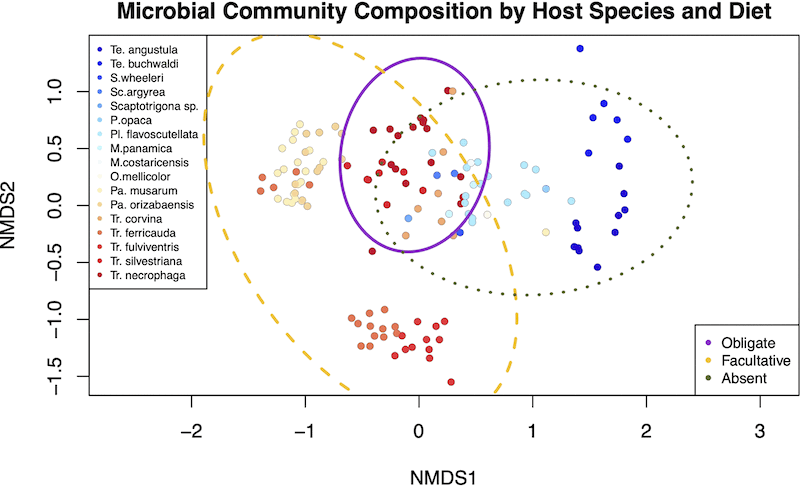
Gut microbial communities in pollen-eating (absent), or facultatively or obligately necrophagous stingless bees.
However, the gut microbiome was not entirely unique. Many species were also found in facultative necrophagous bees, or in the pollenivorous species.
It’s not yet clear what all these new species actually ‘do’ in the gut of these carrion eating ‘vulture’ bees. Further studies will be needed to determine this.
And, of course, this study begs the additional question.
Which came first, the chicken or the bacteria? {{8}}
Did the microbiome change in response to a change in diet, or was the change in diet enabled by the change in the microbiome?
And, the topic of changes in the microbiome is the topic of the third paper … which, you’ll be relieved, is on honey bees.
The microbiome of summer and winter bees
I really used the ‘vulture bees’ paper to introduce the concept of the symbiotic microbiome.
In honey bees, the microbiome has been extensively studied over the last decade or so.
A striking feature is that it includes relatively few species of bacteria, and is dominated by less than 10 in total {{9}}. These species are conserved regardless of geography, life stage (nurse bee, forager etc.) or season.
Almost every study of the honey bee microbiome has been a qualitative one. By that I mean the scientists determine the species present, but ignored the quantities of the different bacteria.
In comparison, a quantitative study would have determined the amounts of some or all of the core species in the microbiome.
And that is exactly what Kešnerová et al., (2020) did in their study entitled Gut microbiota structure differs between honeybees in winter and summer {{10}}.
Multi-year, multi-hive studies
As you would expect from a paper in the ISME Journal {{11}} this is a thorough study, involving sampling of one hive on a monthly basis for 24 months, and fourteen hives in two different locations in the summer and winter. Each sampling involved multiple individual bees that were analysed. There are some additional experiments on colonisation of the gut that I’m going to largely ignore here.
The authors qualitatively and quantitatively studied only five of the core species and two non-core species from the gut microbiome. The names don’t really matter, but are shown in the figures below.
There’s a huge amount of date in this figure.
However, simply by looking at the monthly changes (A), or the community composition (B), it is clear that summer foragers and winter bees have significantly different microbial populations within the gut.
In addition, the overall levels of many of the species tested (C) were significantly increased in the winter bees population.
Summer bees, nurse bees and winter bees
From a physiological and dietary point of view, there are some similarities between nurse bees and the long-lived winter bees. The authors therefore tested the bacterial population the gut of each contained in summer (foragers and nurse bees) and winter (winter bees).
Nurse bees and winter bees contained at least 10 times the population of bacteria as present in the gut of foragers (A, above). Of these, nurse bees were intermediate in the range of species between the foragers – which had a greater range – and the winter bees which contained fewer species.
Finally, detailed statistical analysis of the populations in the three bee types indicated that they were distinct (C), despite conservation of several of the core microbiome species. This latter analysis showed that, whilst each was distinct, all of the populations were similarly variable within a particular bee type i.e. none of the dots are more clustered/scattered in the third panel above.
Diet and the microbiome
Numerous studies have shown that diet influences the bacteria in the gut – of honey bees, vulture bees, flies, mice and men. It’s therefore very likely that the diet of nurse and winter bees at least partly accounts for the differences in the bacterial community present in their gut.
Foragers need an energy-rich diet and mainly feed on nectar and honey. In contrast, nurse bees and winter bees also consume pollen.
In studies I don’t have time to discuss, Kešnerová et al., (2020) also showed that feeding gnotobiotic bees {{12}} pollen and syrup resulted in significant increases in the amount and levels of bacterial colonisation i.e. they resembled nurse or winter bees. In contrast, bees fed syrup alone developed a gut microbiota that resembled that of foragers.
All of which made me think about feeding bees syrup/fondant for the winter vs. feeding/leaving them honey.
Honey is better for bees in the winter … really?
Beekeepers who leave their bees with a super or so of honey are often convinced of the benefits to the colony.
When pressed they unfortunately provide little evidence to support their expensive decision {{13}}.
I’m not aware of a single study that convincingly i.e. statistically, demonstrates that colonies are more successfully overwintered on a diet of pure honey, rather than a colony fed syrup or fondant.
I’ve discussed this before – for example, see my response to this comment in the post entitled ‘Cut more losses’.
Is the microbiome a marker of colony health?
However, this paper on the winter bee microbiome got me wondering whether – in the absence of evidence supporting better overwintering survival – bees fed syrup/fondant or honey have a different bacterial population.
It would be very interesting if they did.
Furthermore, as scientists further untangle the role of these bacteria, we would be able to tell whether syrup/fondant was better, worse or neutral in terms of the changes it induced in the bacteria that inhabit the winter bee gut.
Unfortunately, the Kešnerová et al., (2020) study has no details whatsoever of the hive management regime. The work was done in Lausanne, Switzerland, but it doesn’t say how or what they were fed for the winter.
Nor is there any mention of whether the diet was supplemented with sodium butyrate {{14}}. This will also need to be studied as butyrate is a natural product of some gut microbes and there is evidence that – in humans at least – it is involved in communication between the gut and the brain.
And I think my gut is telling my brain that it would like some pizza …
{{1}}: Discuss …
{{2}}: Though I suppose there’s the question about “how can you tell if they are all infected … where’s the negative control?”, which is a valid point.
{{3}}: Tang et al., Real-time monitoring of deformed wing virus-infected bee foraging behavior following histone deacetylase inhibitor treatment, iScience (2021), https://doi.org/10.1016/j.isci.2021.103056.
{{4}}: Though it’s worth noting that the bees they used appeared very susceptible to oral challenge with DWV … strange.
{{5}}: And viruses and other microbes etc., though it’s usually used to only refer to the bacteria.
{{6}}: Zheng H, Nishida A, Kwong WK, Koch H, Engel P, Steele MI, Moran NA. 2016. Metabolism of toxic sugars by strains of the bee gut symbiont Gilliamella apicola. mBio 7:e01326-16.
{{7}}: Or I’d be a large pizza.
{{8}}: Which is the title I’d have used for the paper.
{{9}}: More accurately, these are phylotypes, not species, based upon their genetic relatedness of ≥97% … which is not quite the same, but for our purposes will do.
{{10}}: The ISME Journal 14:801-814, in the following discussion you can consider that the term microbiota = the microbiome, though it is probably subtly different.
{{11}}: Which is part of the Nature Springer stable and describes itself as a multidisciplinary journal of microbial ecology.
{{12}}: Bacteria-free bees … or at least hugely reduced. Gut bacteria were at ~10,000 times lower levels.
{{13}}: As I’ve said before, It’s a free world … and the more that do this, the less competition there is for those of us who sell honey. I don’t care what they do, but I do care if they make claims that are unsupported … there’s too much of that in beekeeping already.
{{14}}: Unsurprisingly …
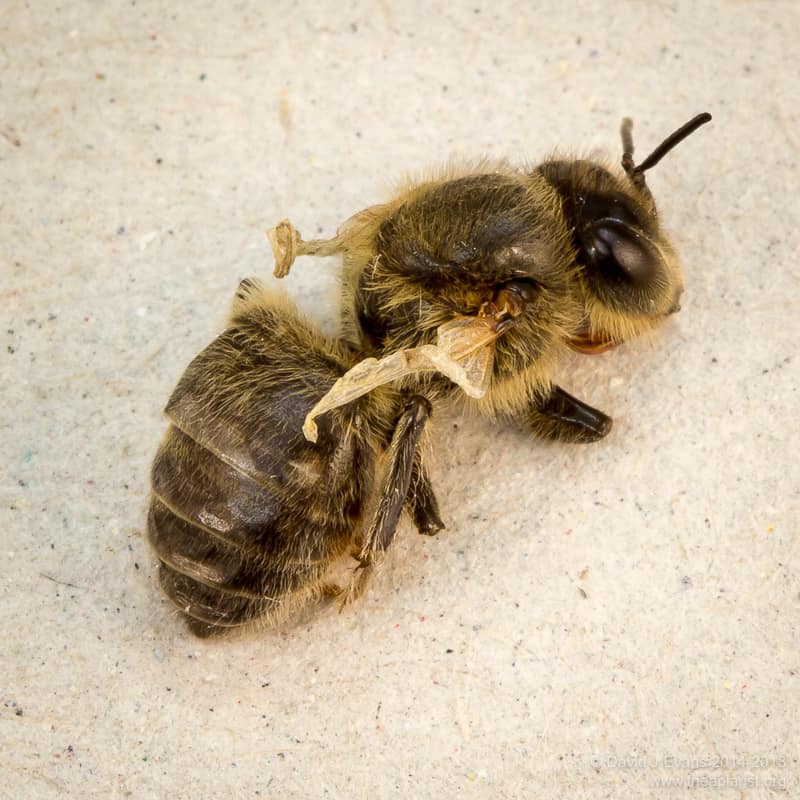
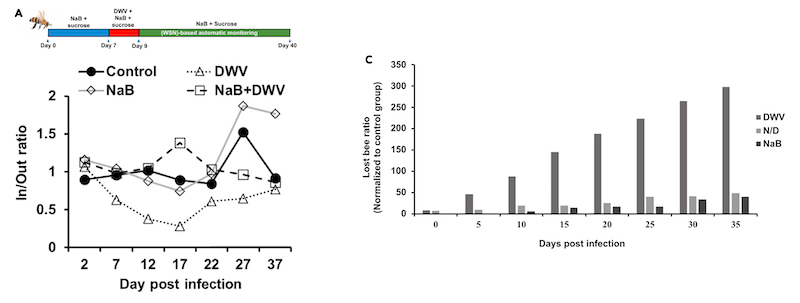
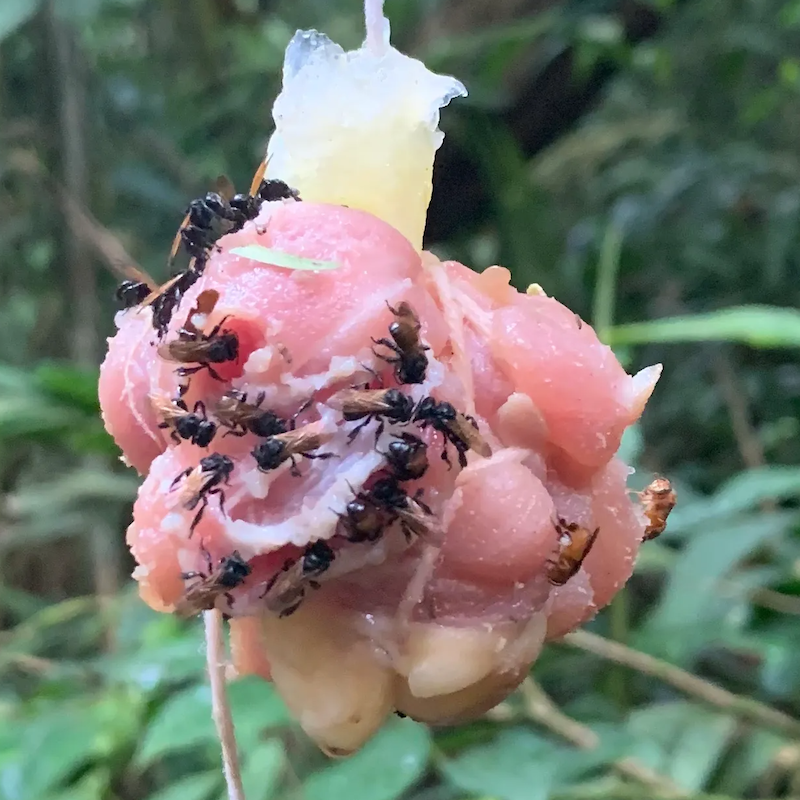
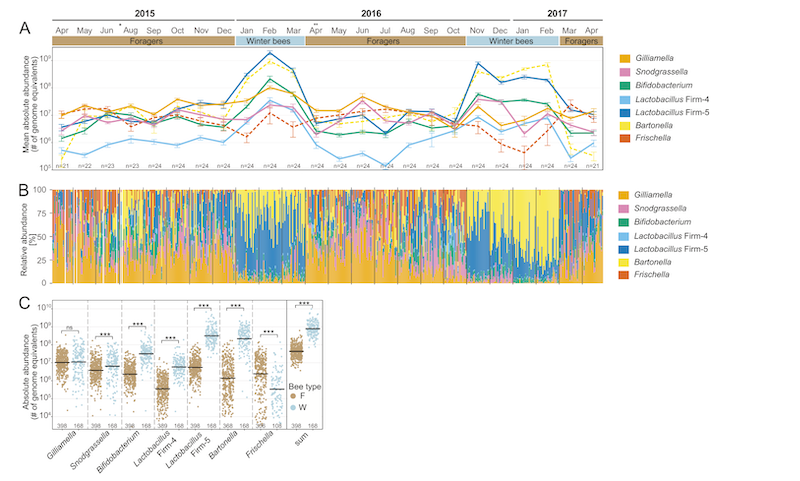
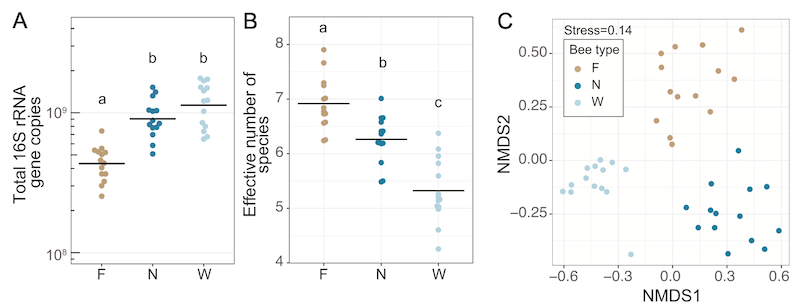
Join the discussion ...